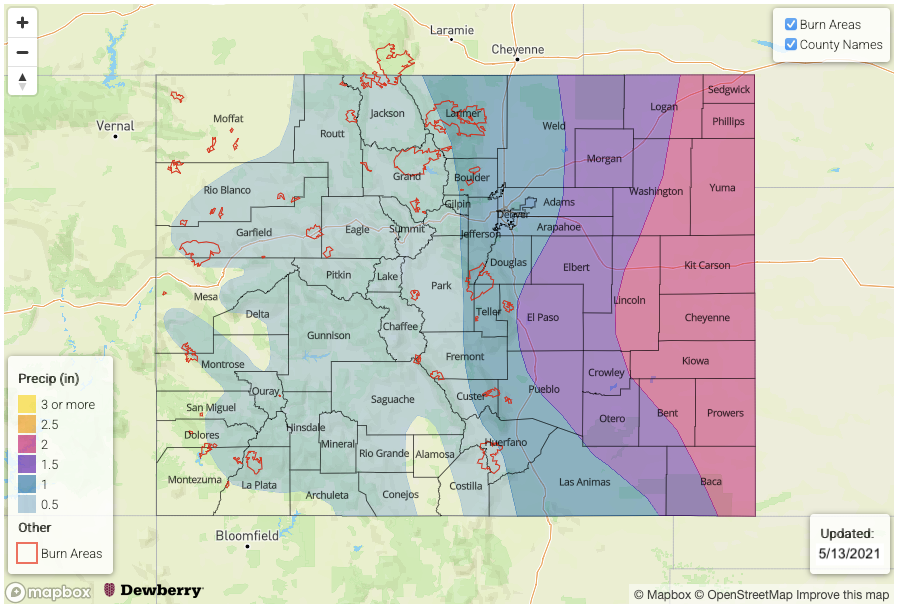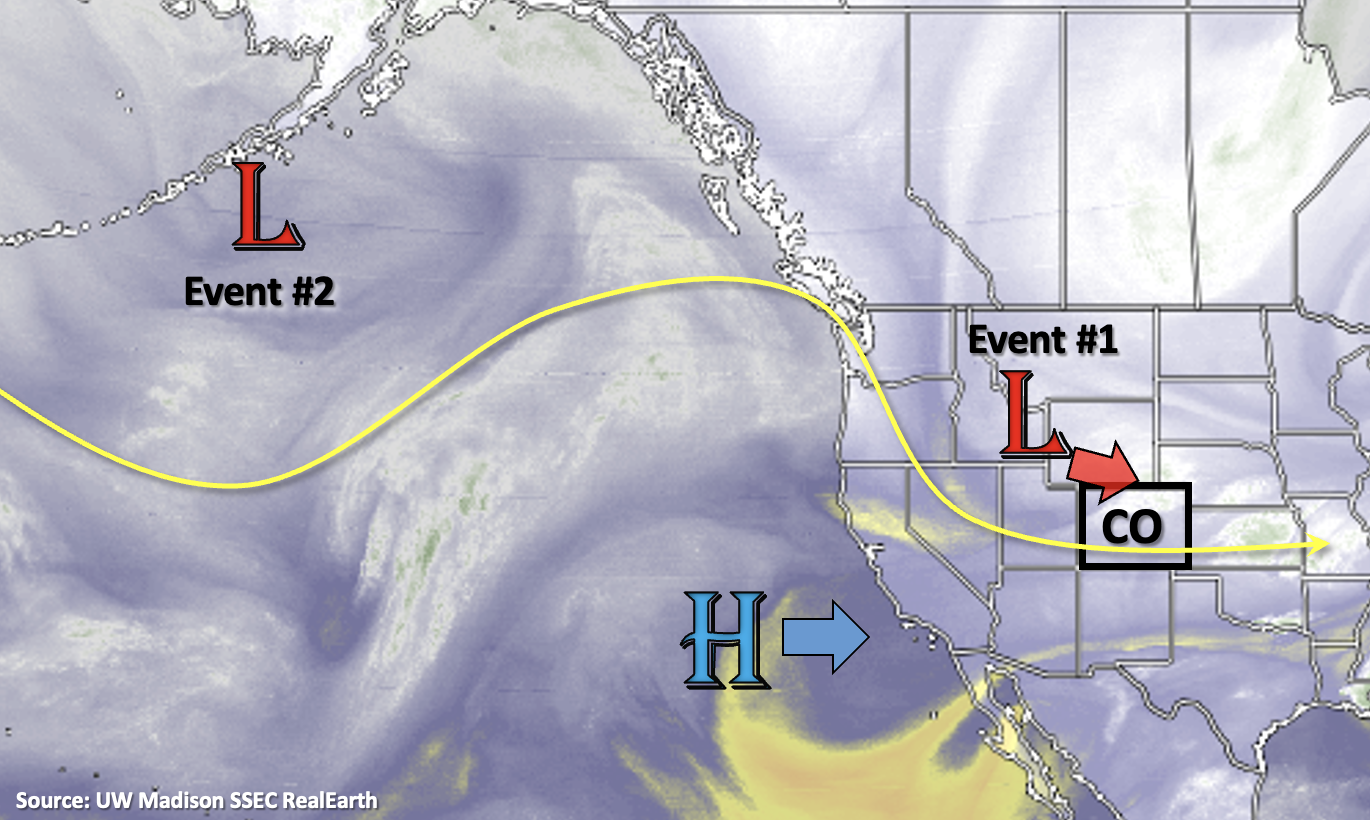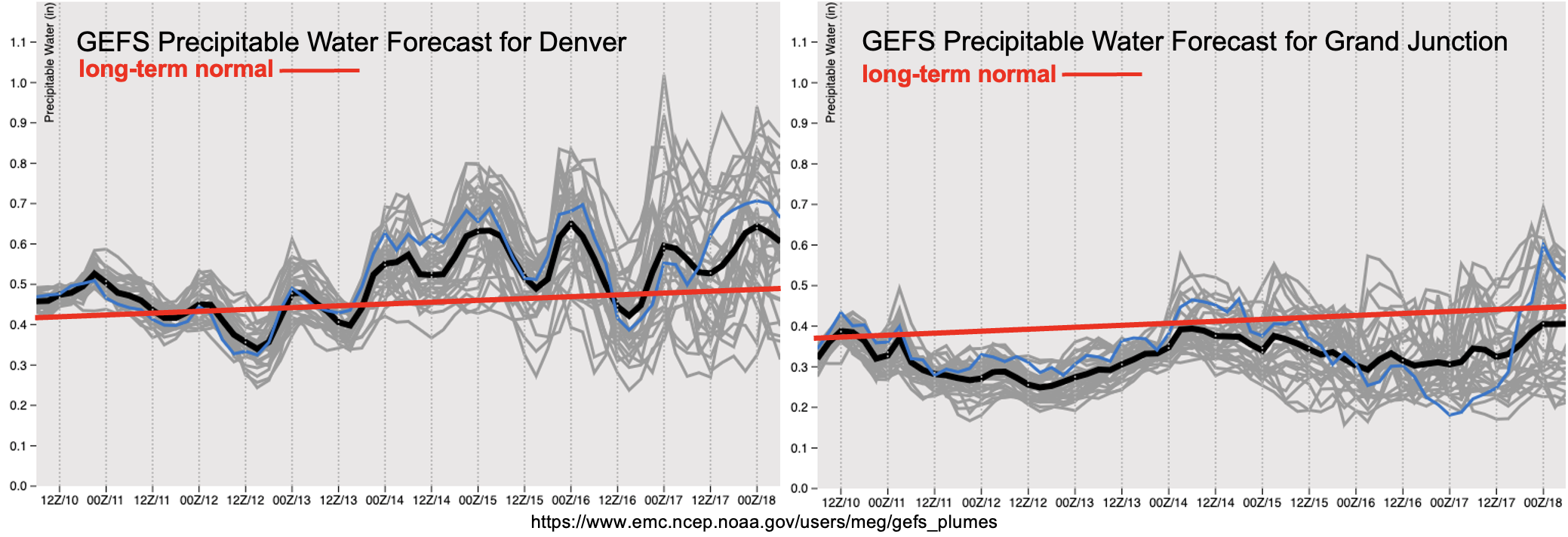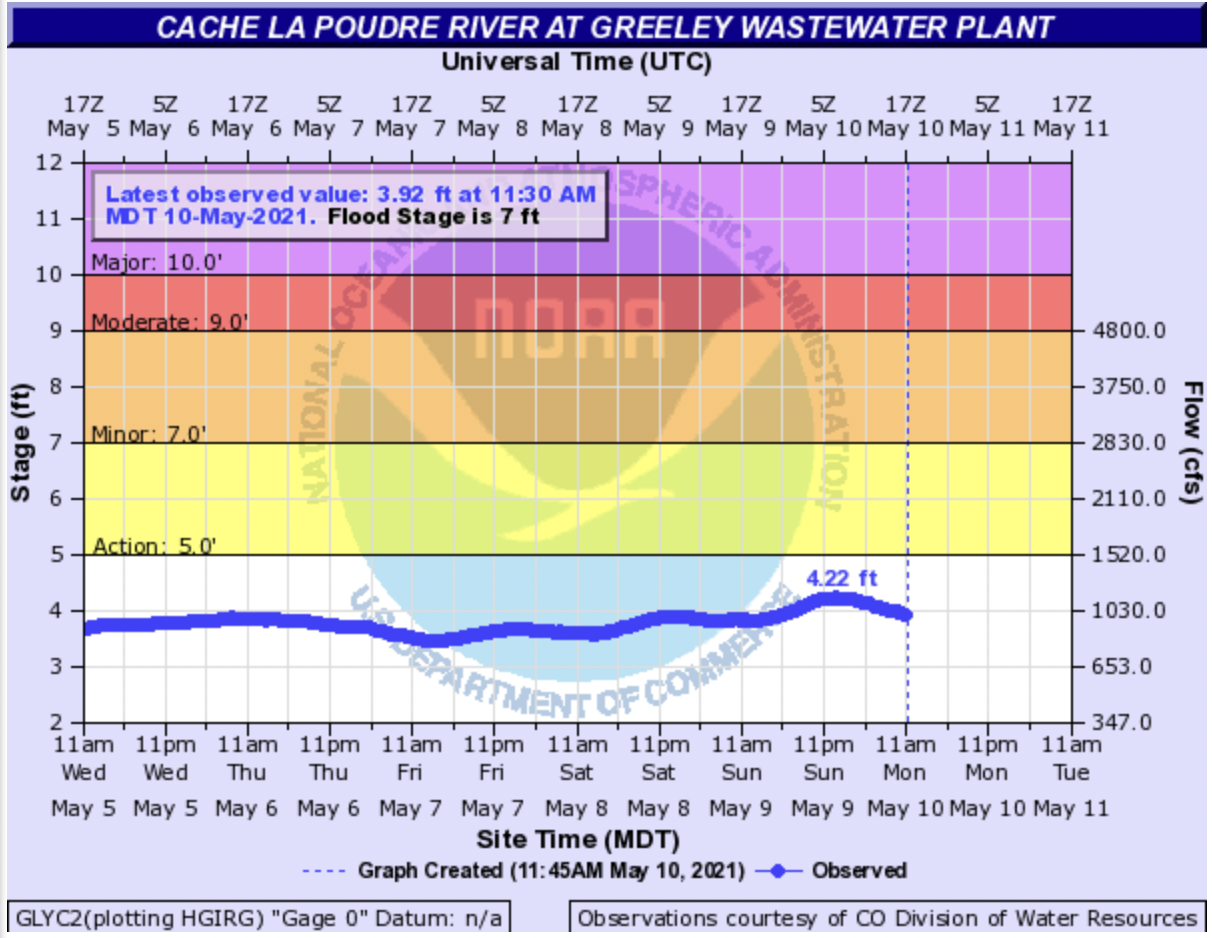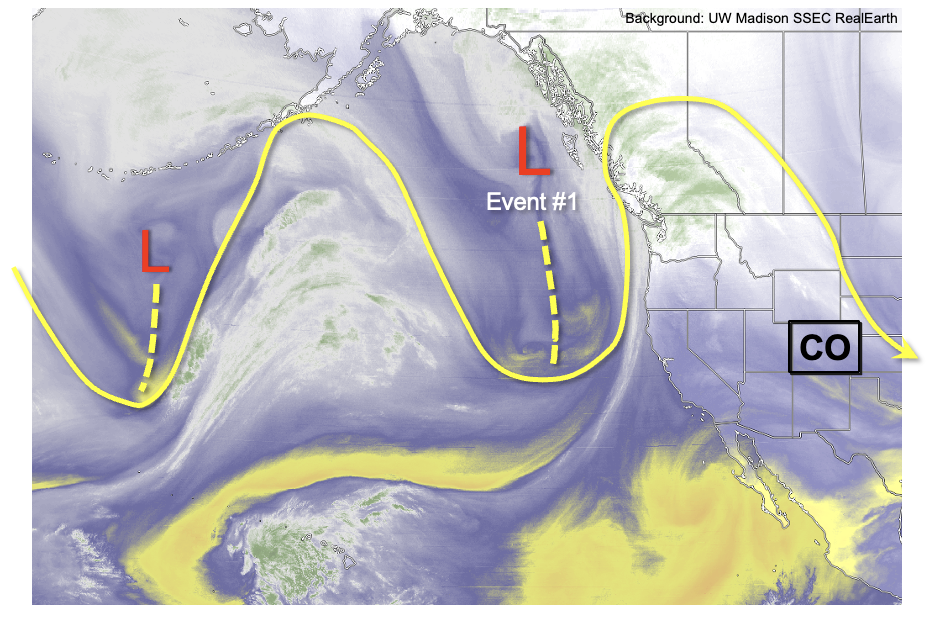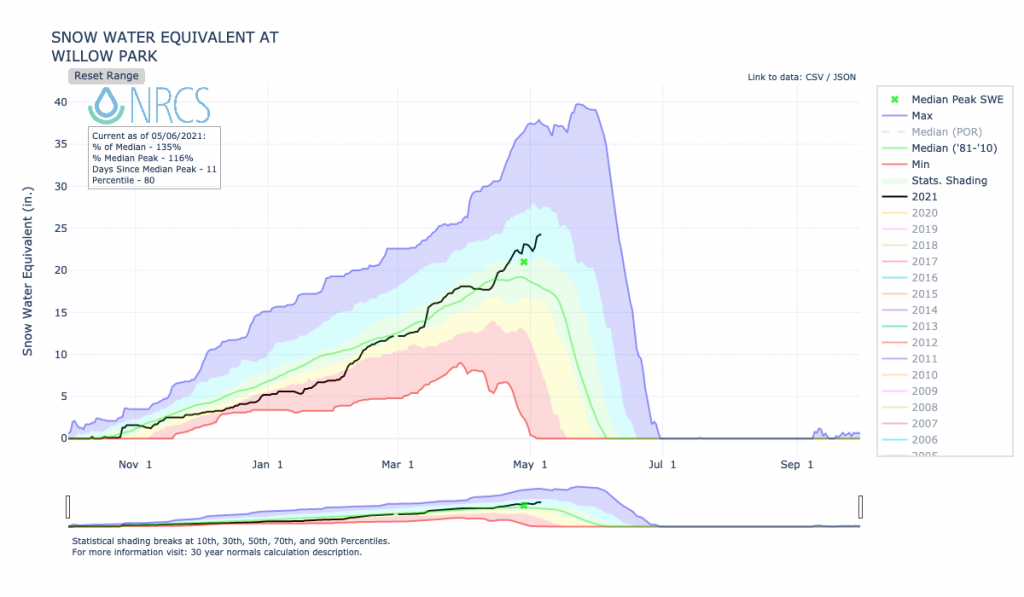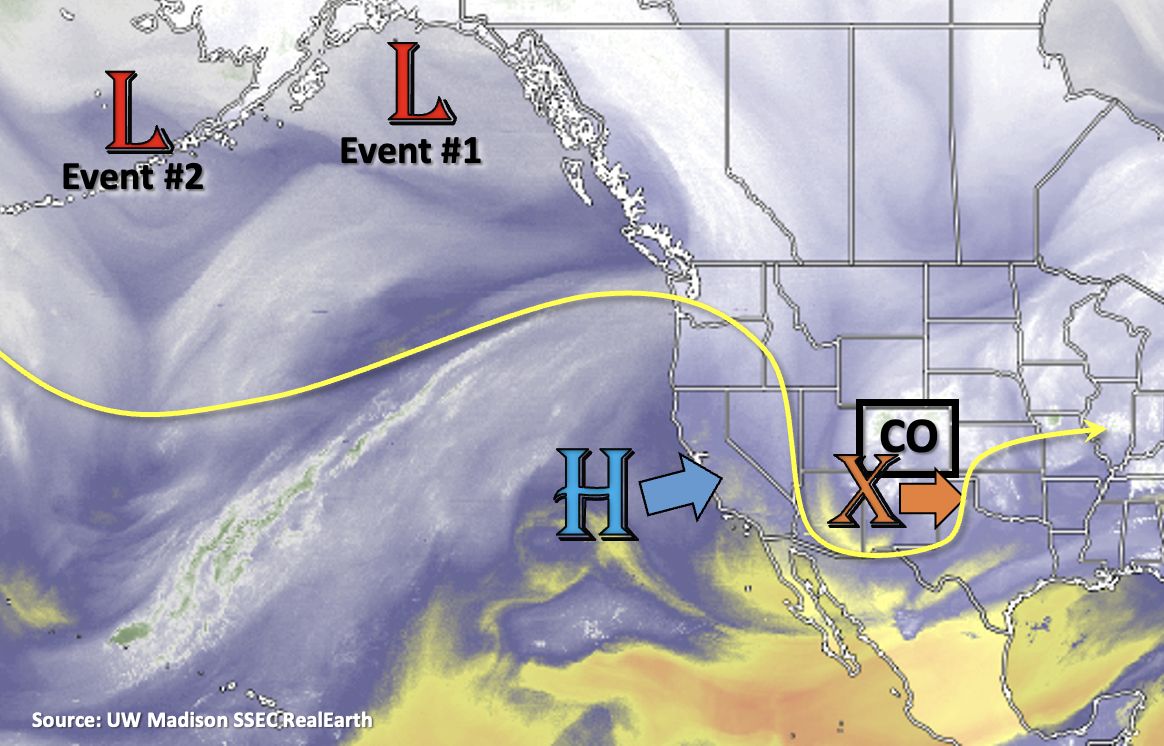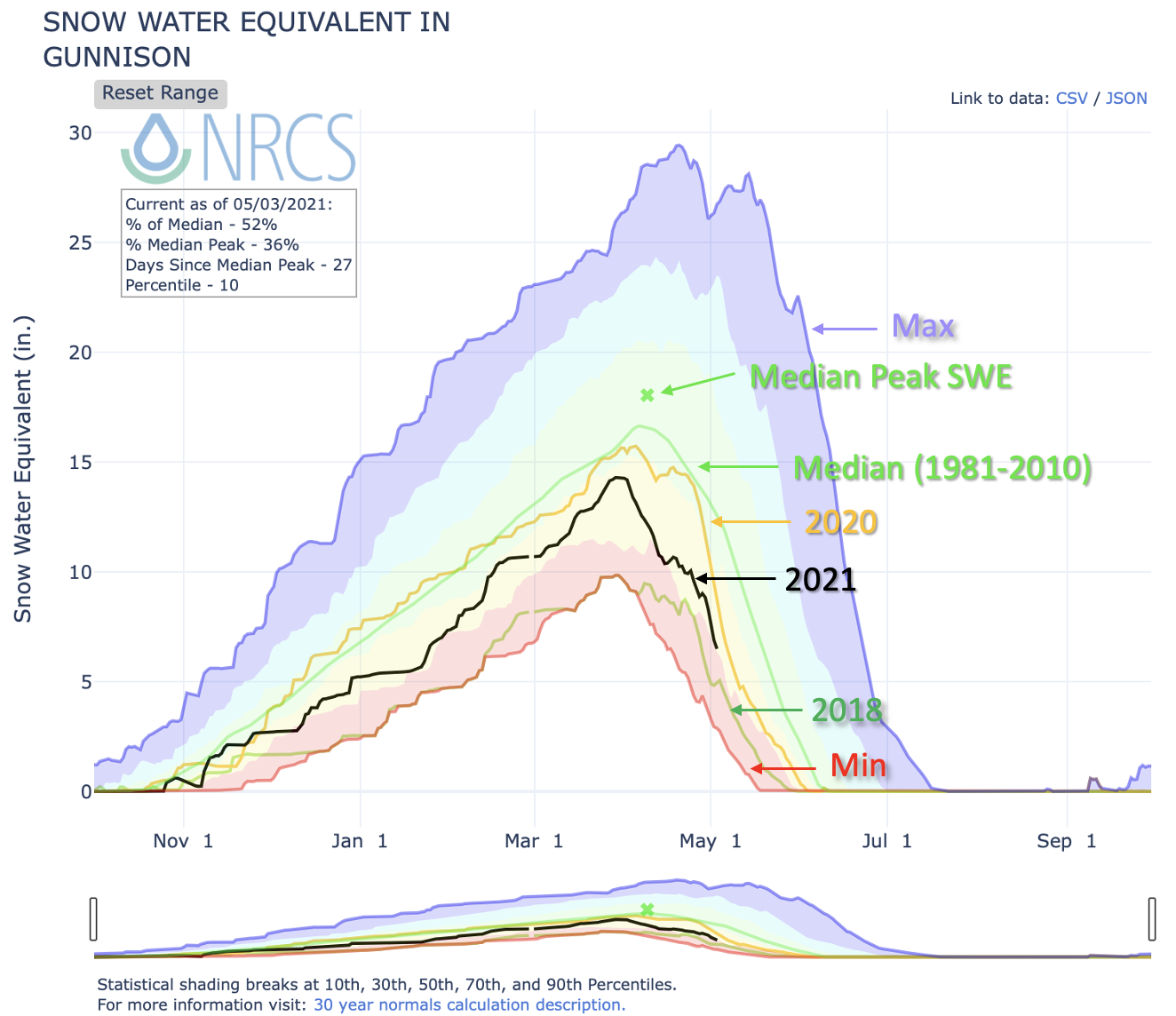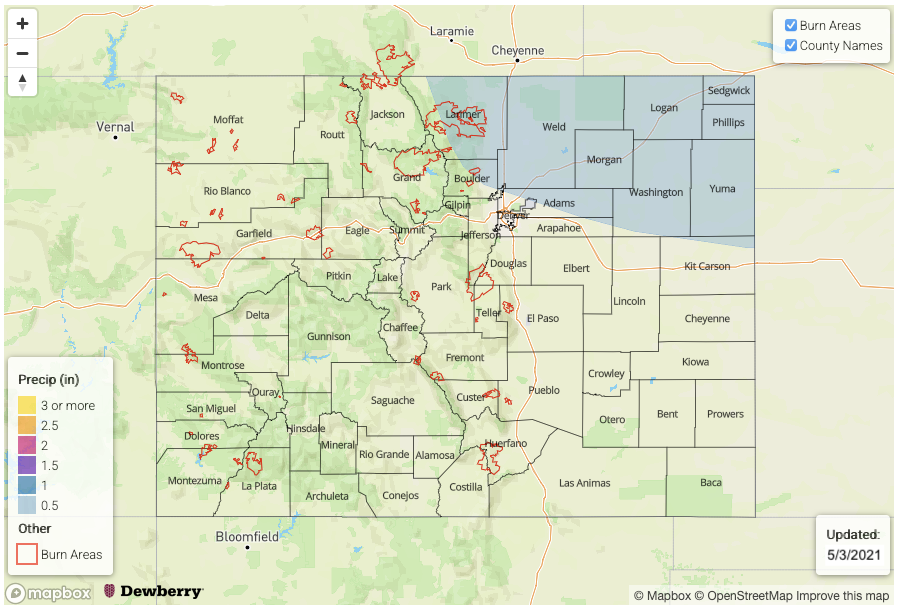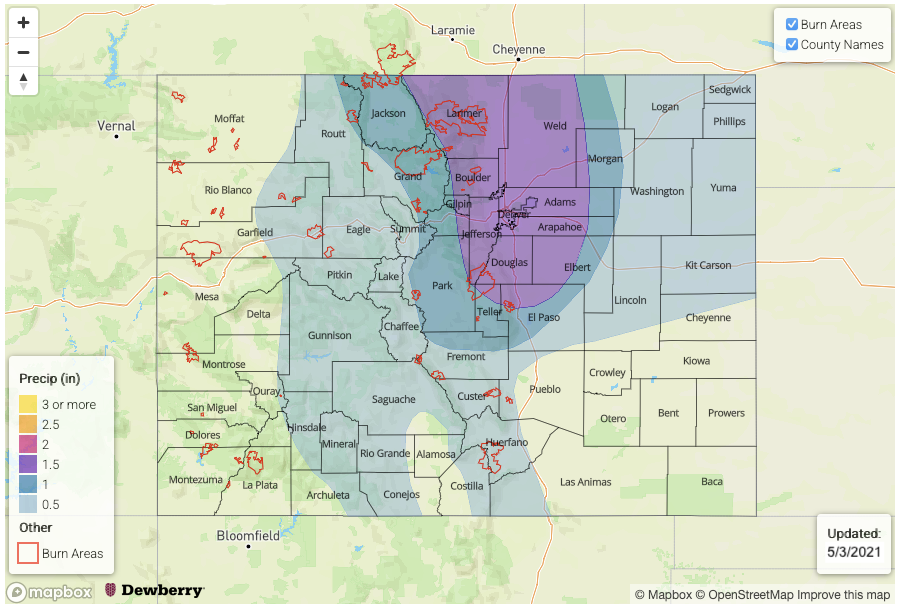Issue Date: Thursday, May, 13th, 2021
Issue Time: 1:40PM MDT
Valid Dates: 5/14 – 5/28

Active weather continues for this next forecast period with Event #1 being broken down into two parts. The first part of the event occurs tomorrow into this weekend as a cutoff Low develops and moves inland over California. During that period, a weak, broad ridge will be in place over Colorado. Although western Colorado will remain dry, eastern Colorado, particularly the eastern plains, has a chance for severe weather each afternoon. Part 2 of Event #1 occurs late Sunday into next week as the Low moves into the Four Corners region. Starting Monday, strong upslope flow, decent moisture and mid-level energy will be in place across the state bringing widespread showers with embedded convection. This system is forecast to be a warmer than the last two, so expect precipitation to fall as rain except for the very highest elevations.
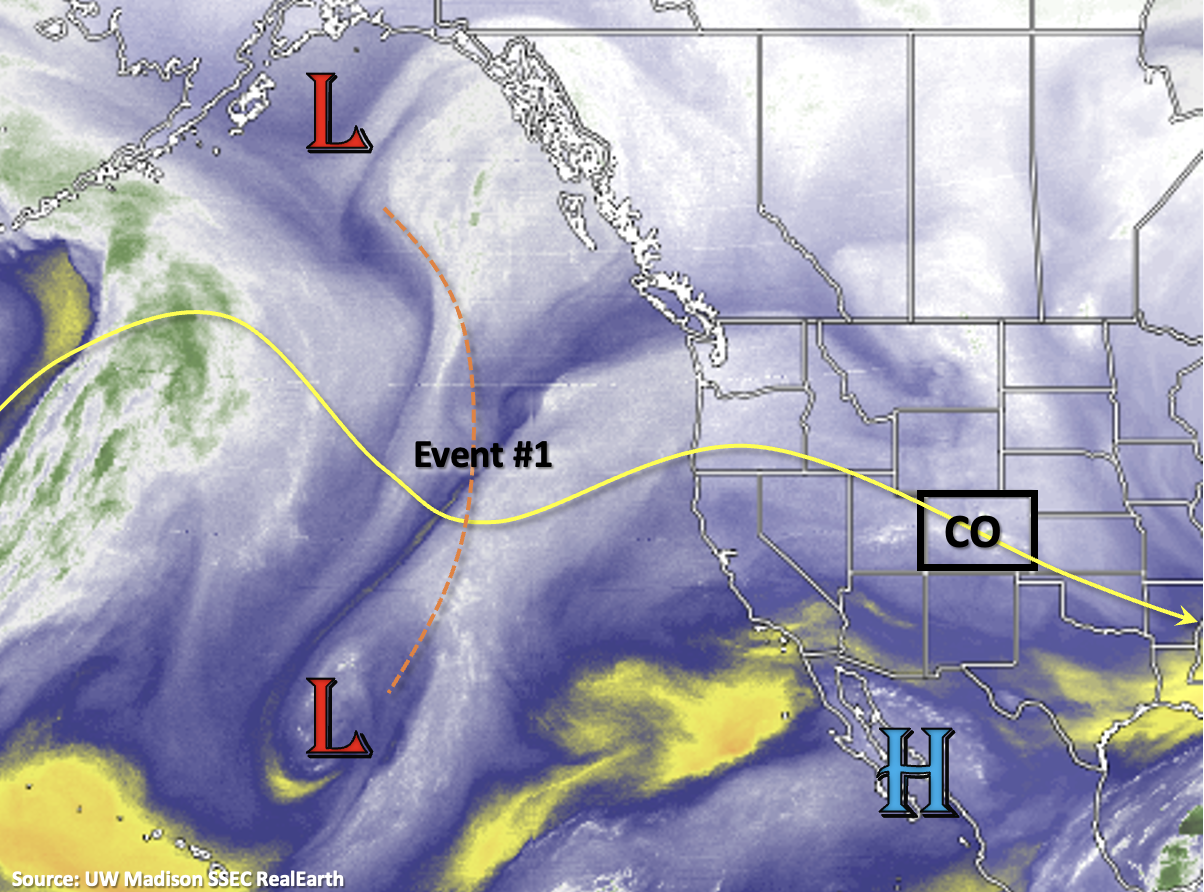
The GEFS really ramps up moisture over eastern Colorado from tomorrow afternoon through next week as does the EPS, but to a lesser extent. Until the Low makes its way into the Four Corners region, western Colorado will likely stay dry. With PW remaining under 1 inch (Denver) for part 1, flooding is not expected with storms that fire over the eastern mountains. However, a stronger thunderstorm over the adjacent plains may produce some brief, heavy rainfall if steering flows remain light. For part 2 of the event, more stratiform rainfall is expected. There is No Apparent flood threat due to soils having some time to dry out between systems and PW values well under an inch. However, burn areas will be watched closely for embedded convection each afternoon.
Streamflow:
Between warmer temperatures and the possibility of a little rain on snow, increased flows are forecast across for rivers and local streams through next week. At this time, flows across major rivers are low enough that flooding is not expected. However, bankfull conditions are possible on smaller creeks and streams through next week. Especially if embedded convection occurs over the same area for a couple days in a row. To report any local stream flooding this spring, be sure to use our Report a Flood page.
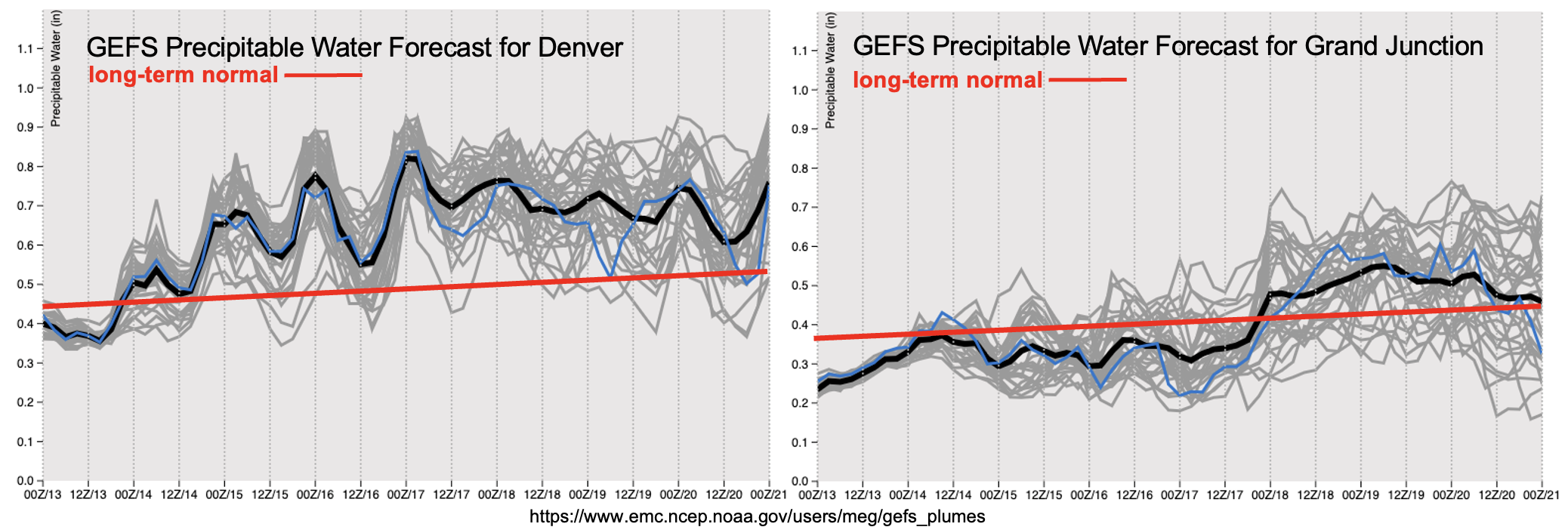
Below is the always important reservoir storage across the major basins and statewide. Although April is not quite as informative as May and June, below is a quick look at where we are starting at the beginning of this warm season. In April, all basins except the South Platte and Arkansas experienced deficits in their average usable storage. Reminder that except for the Northeast Plains, precipitation was below normal in April. However, the Gunnison, Colorado and Yampa/White/North Platte basins all remain above 80% of average usable storage. As far as flow forecasts for the major rivers, west of the Continental Divide, volumes are expected to be ~40-60% of normal, which is expected to put additional stress on the reservoir storage. East of the Divide, flow volumes are forecast to be about ~70 to 100% of normal, so less stress the reservoir storage is expected. Unfortunately, the last couple of systems created a precipitation surplus mainly over the Front Range and eastern plains, so dry conditions and likely more water use will continue over western Colorado.
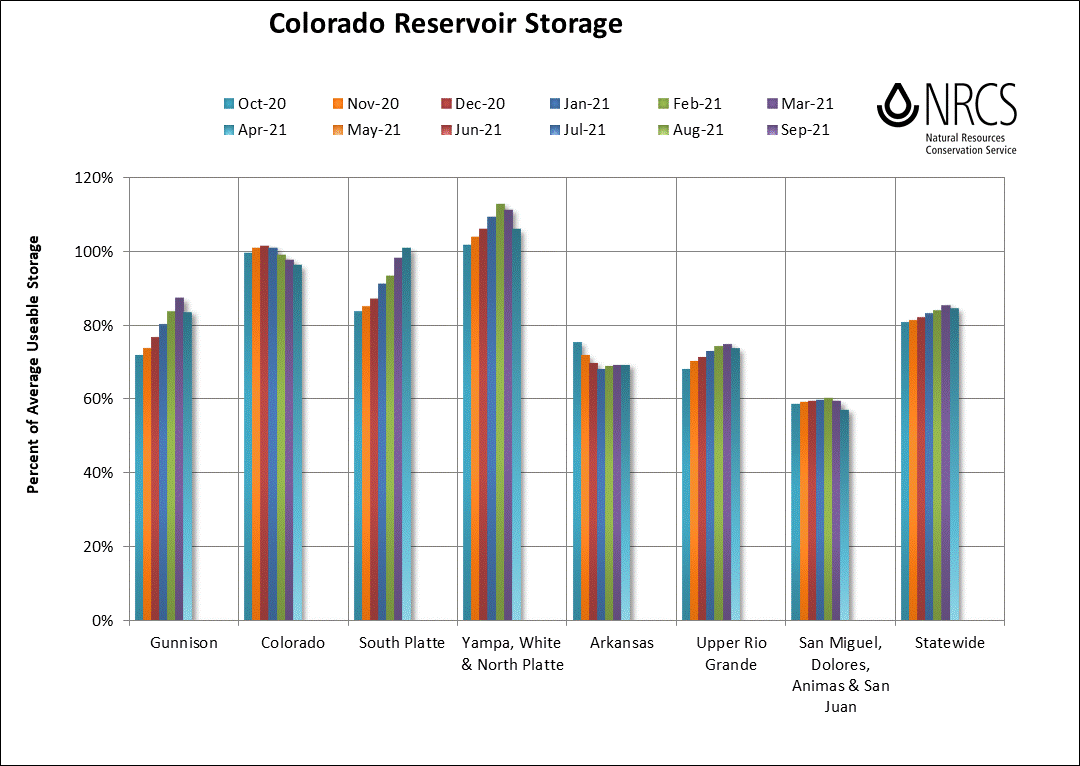
Event #1: Friday – Wednesday (5/14 – 5/19)
No Apparent flood threat – first for severe storms over eastern Colorado, then for the more widespread precipitation event.
Finally, it’s time for severe weather season to kickoff. While there’s a chance for a severe storm or two along the dryline that develops over the eastern plains tomorrow, lack of large-scale lift may prevent storms from breaking the cap. The better chance for severe storms will be on Saturday afternoon as more mid-level energy, shear and moisture are present. Expect storms to develop over the Front Range and Southeast Mountains during the early afternoon and push into the adjacent plains where they will meet better moisture and dynamics. The main threats from storms will be large hail, strong winds, brief heavy rainfall and perhaps a weak tornado. At this time there is No Apparent flood threat but local heavy downpours may be possible. Be sure to tune back into the FTB each morning for the latest details.
Upslope flow picks up on Sunday into Monday, which will produce more widespread precipitation through Wednesday. The majority of the precipitation should fall as rain except for the highest peaks. Prolonged rain and embedded convection could cause some issues over the burn areas, so be sure to check the FBF each morning. Elsewhere, rainfall should be gradual enough that flooding is not expected, especially with the spring green-up. Thus, there is No Apparent flood threat issued.
